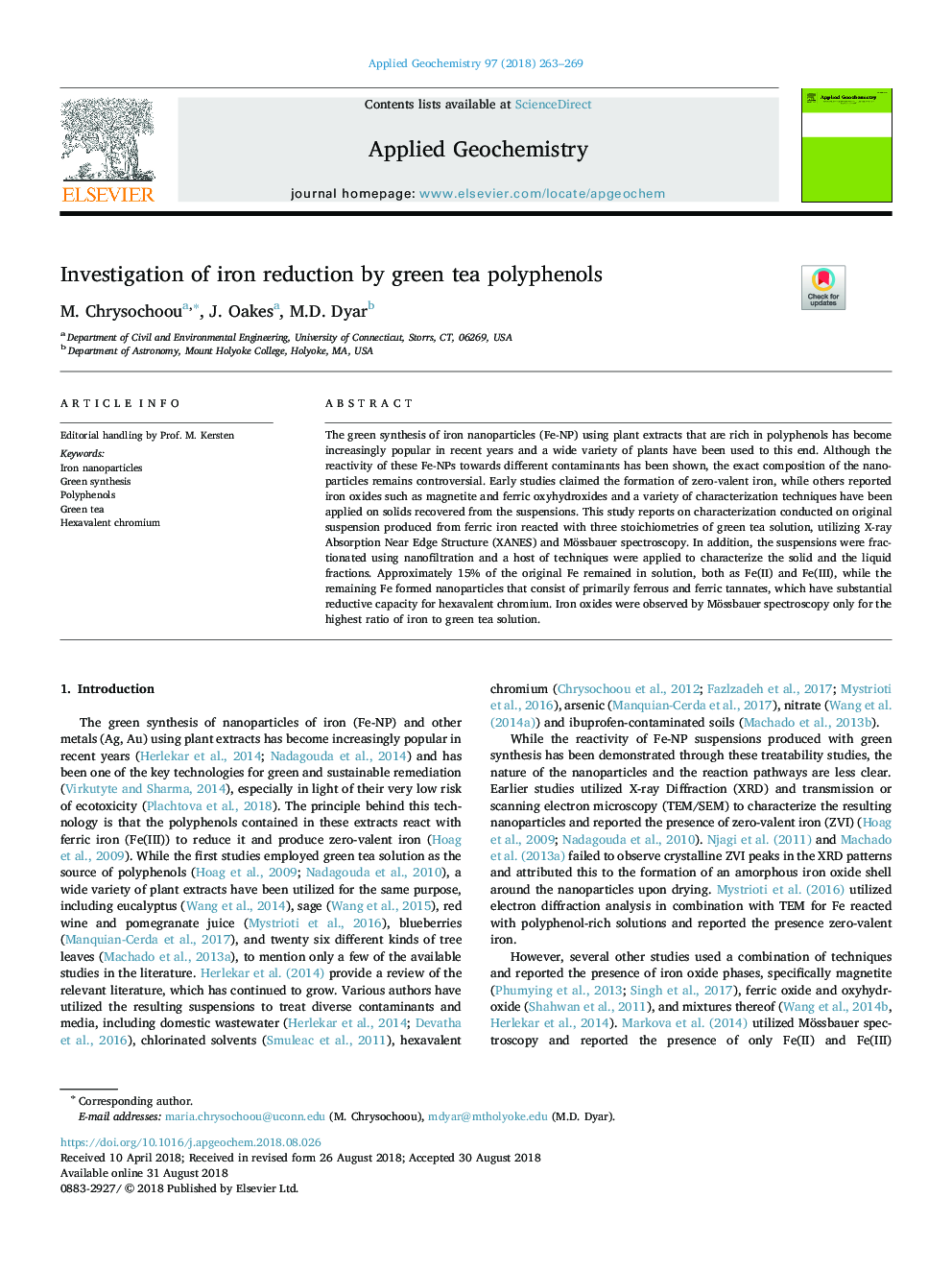| Article ID | Journal | Published Year | Pages | File Type |
|---|---|---|---|---|
| 10113915 | Applied Geochemistry | 2018 | 7 Pages |
Abstract
The green synthesis of iron nanoparticles (Fe-NP) using plant extracts that are rich in polyphenols has become increasingly popular in recent years and a wide variety of plants have been used to this end. Although the reactivity of these Fe-NPs towards different contaminants has been shown, the exact composition of the nanoparticles remains controversial. Early studies claimed the formation of zero-valent iron, while others reported iron oxides such as magnetite and ferric oxyhydroxides and a variety of characterization techniques have been applied on solids recovered from the suspensions. This study reports on characterization conducted on original suspension produced from ferric iron reacted with three stoichiometries of green tea solution, utilizing X-ray Absorption Near Edge Structure (XANES) and Mössbauer spectroscopy. In addition, the suspensions were fractionated using nanofiltration and a host of techniques were applied to characterize the solid and the liquid fractions. Approximately 15% of the original Fe remained in solution, both as Fe(II) and Fe(III), while the remaining Fe formed nanoparticles that consist of primarily ferrous and ferric tannates, which have substantial reductive capacity for hexavalent chromium. Iron oxides were observed by Mössbauer spectroscopy only for the highest ratio of iron to green tea solution.
Related Topics
Physical Sciences and Engineering
Earth and Planetary Sciences
Geochemistry and Petrology
Authors
M. Chrysochoou, J. Oakes, M.D. Dyar,
